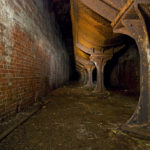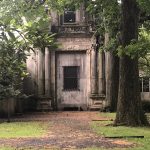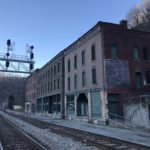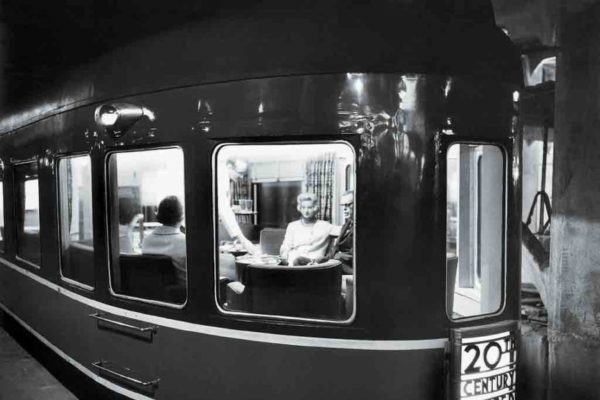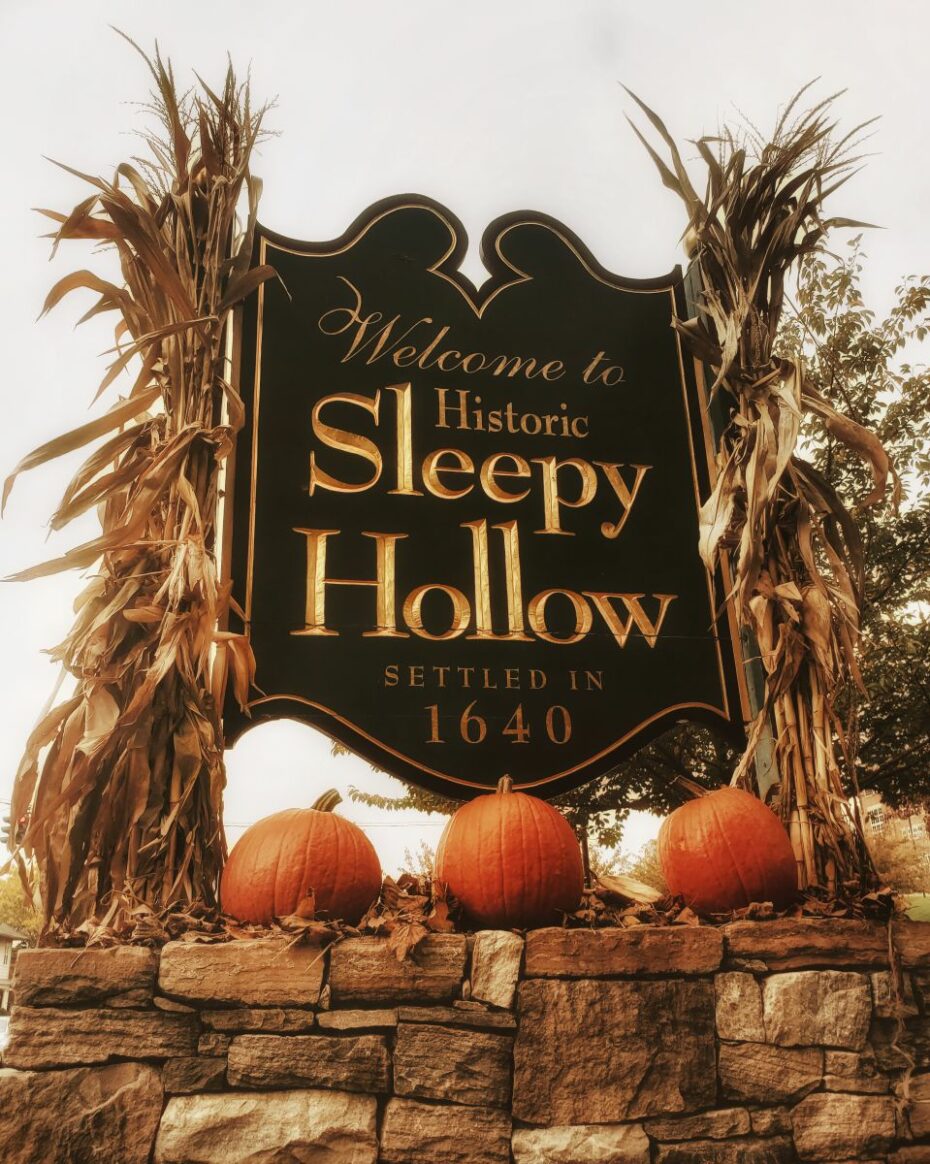
One of things that surprises most people about Sleepy Hollow, is finding out that it is a real place. For a name so shrouded in folklore and tales of headless horsemen told around firesides, it may seem like the creation of a gothic writer’s imagination, but Sleepy Hollow is in fact a small quaint village to be found just north of New York City. And there is no finer time to explore the area than the month of October – leaf peeping season – when people come from the world over to visit the place where Washington Irving set the Legend of Sleepy Hollow. So without further ado, here is our handy guide to some of the delights to be found when visiting Sleepy Hollow Country.
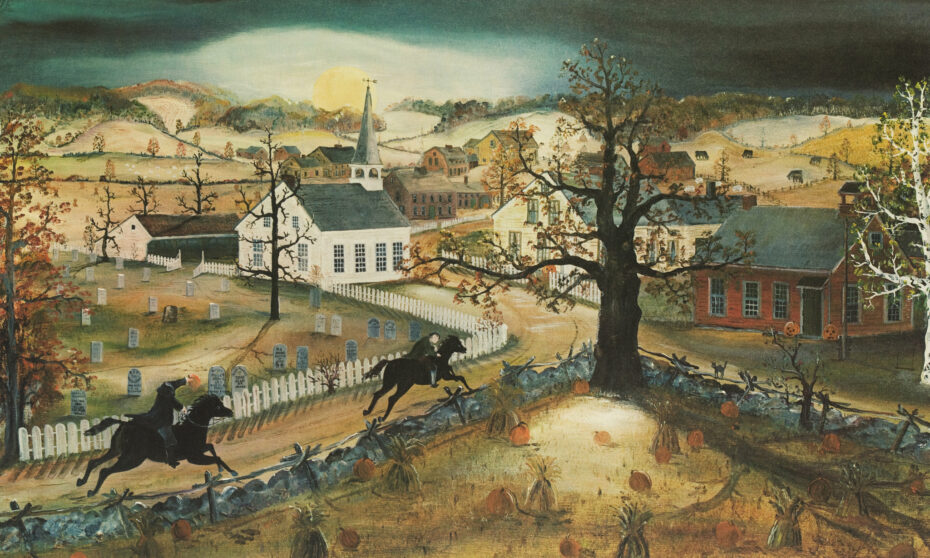
“There is a little valley or rather lap of land among high hills, which is one of the quietest places in the whole world. A small brook glides through it, with just murmur enough to lull one to repose….From the listless repose of the place, and the peculiar character of its inhabitants, who are descendants from the original Dutch settlers, this sequestered glen has long been known by the name of Sleepy Hollow…The whole neighbourhood abounds with local tales, haunted spots, and twilight superstitions.” – The Legend Of Sleepy Hollow, Washington Irving.

One of the best aspects of visiting Sleepy Hollow Country is the actual journey of getting there: starting at Manhattan’s magnificent Grand Central Terminal, a Metro North train will transport you from the metropolis to the lair of the Headless Horseman in just over half an hour, via one of America’s most picturesque train journeys that hugs the banks of the Hudson River. Our destination is the railway station of Tarrytown, about twenty five miles north of the City, for the legend of Sleepy Hollow is a really a story of two neighbouring villages, Tarrytown and Sleepy Hollow.
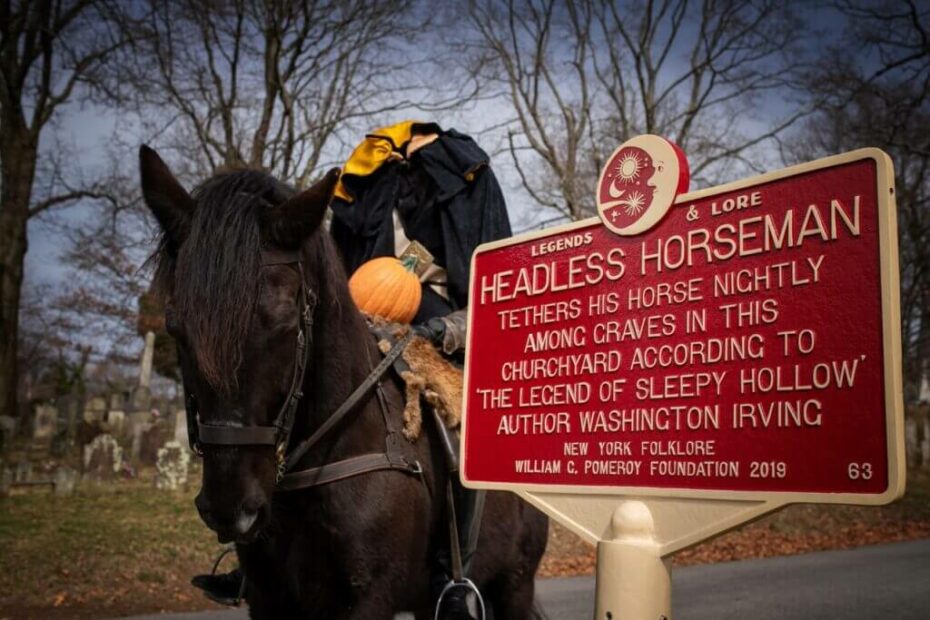
“In the bosom of one of those spacious coves which indent the eastern shore of the Hudson, at that broad expansion of the river denominated by the ancient Dutch navigators the Tappan Zee, there lies a small market town or rural port, which by some is called Greensburgh, but which is more generally and properly known by the name of Tarry Town…..Not far from this village, perhaps about two miles, there is a little valley or rather lap of land among high hills, which is one of the quietest places in the whole world. A small brook glides through it, with just murmur enough to lull one to repose.”
– Washington Irving’s, The Legend of Sleepy Hollow.
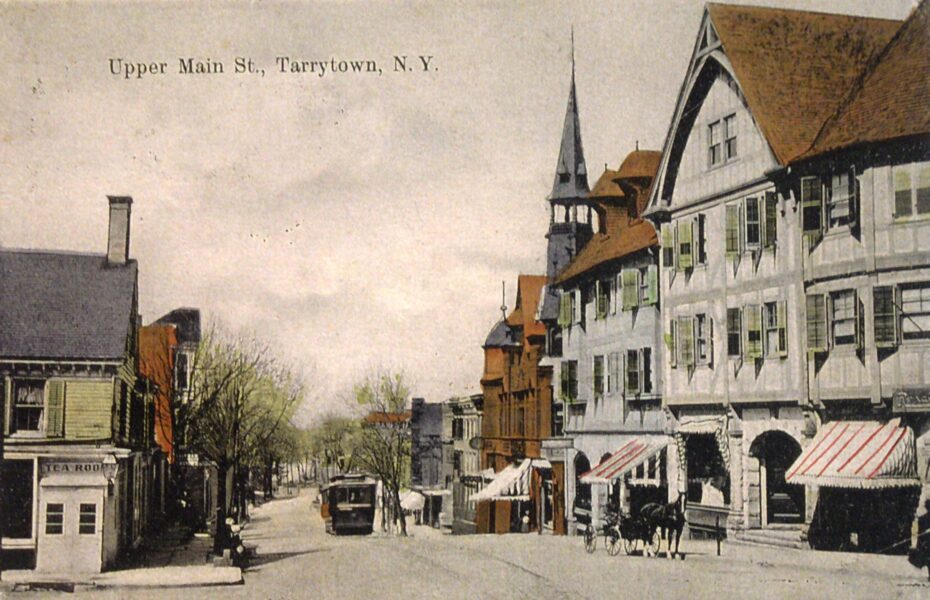
Make the short journey up a winding street from Tarrytown station and you’ll find yourself on the charming main street of the village where Washington Irving made his home. The spirit of Irving still looms large over the area: you’ll find banks, apartment buildings and schools all named in honour of the “first American man of letters”.
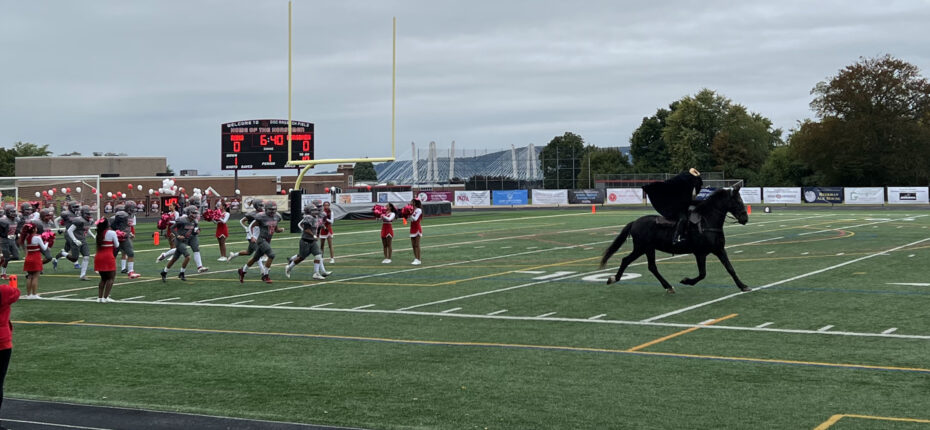
If you spot the local ambulance driving by, you’ll see its side is painted with a full length depiction of the Headless Horseman throwing fiery pumpkin heads at Ichabod Crane; at Sleepy Hollow High School, the football mascot is routinely voted as the scariest in America – it is a real life horse ridden by a headless rider, charging down the touchline.
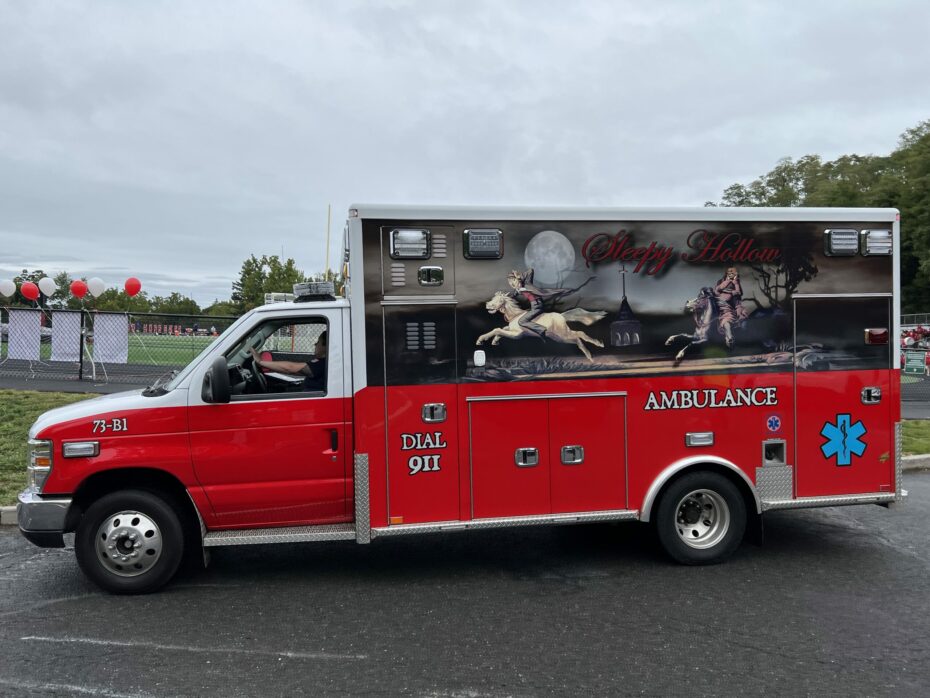
On a misty morning when the fog rolls in from the Hudson River, it still seems just as Irving wrote two hundred years ago that, “a drowsy, dreamy influence seems to hang over the land, and to pervade the very atmosphere.”
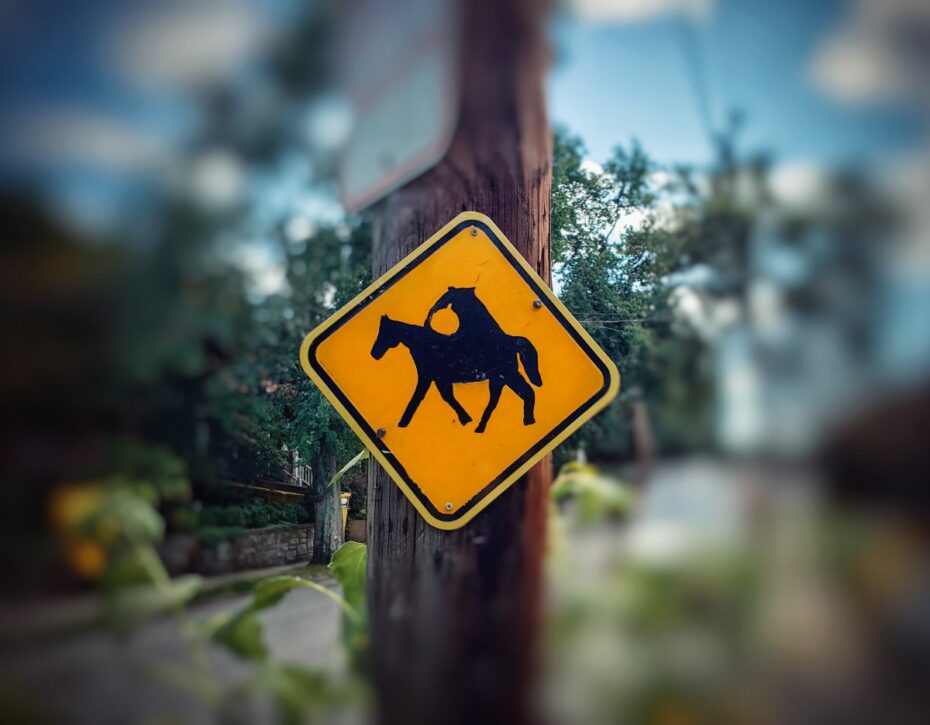
The Old Dutch Church and Burying Ground
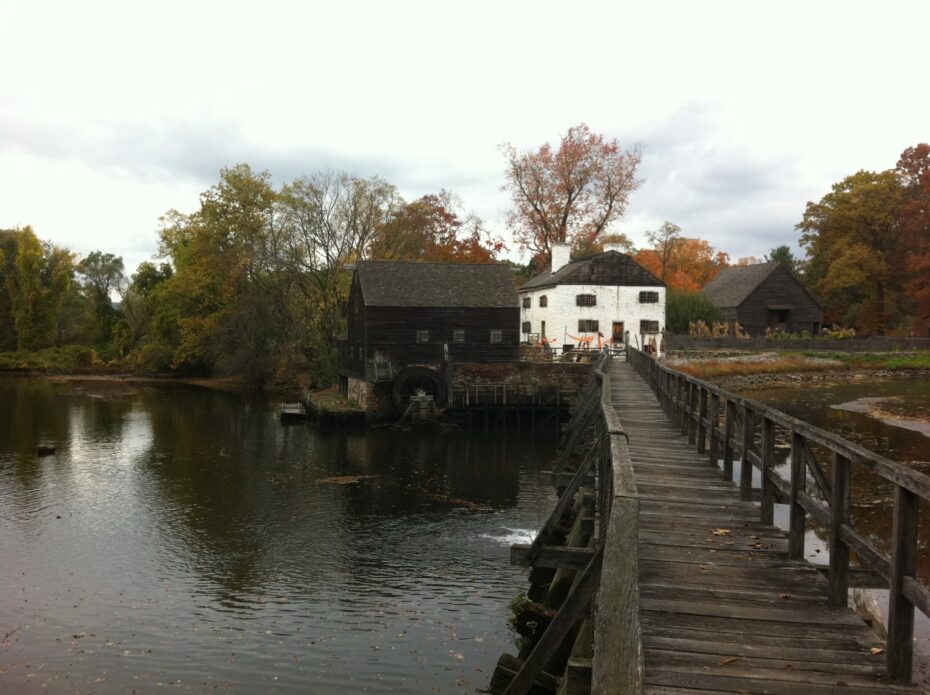
One of the best places to visit is the Old Dutch Church of Sleepy Hollow. Head northwards along Broadway and you’ll pass a giant spectacular sculpture of the Headless Horseman and a millpond bridge of the atmospheric Phillipsburg Manor, a 17th century Dutch Colonial manor house and farm before arriving at a beautiful small stone church perched atop a hill overlooking the old Albany Post Road.
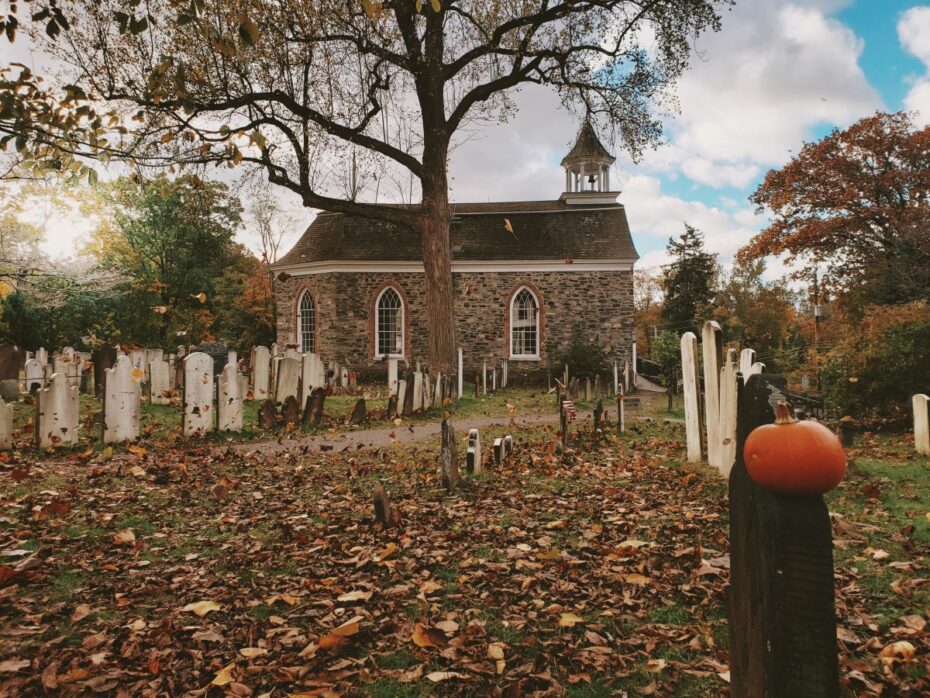
Founded in 1685 by Dutch settlers it is one of the oldest in New York State. Before you step inside the church, notice the different coloured bricks that make up the arch around the door frame; these were the actual bricks used as ballast in the ships that brought the Dutch colonists across the Atlantic and up the Hudson River over three hundred years ago. The church bell, which still peals to bring people to services was also brought from 17th century Holland along with a heavy, dark wood communion table. Far from just a historic landmark, the church is still active and thriving and family oriented. Services are still held here in the summer months and at Christmas, the congregation warmed by an old cast iron stove. The rest of the year, the Dutch Reformed Church meets at an 1830s church on Broadway in Tarrytown.
Washington Irving regularly visited the Old Dutch Church and it would inspire his most famous tale of a Hessian soldier from the Revolutionary War, who’s head was carried away by a cannon ball that haunts Sleepy Hollow.
“Indeed, certain of the most authentic historians of those parts, who have been careful in collecting and collating the floating facts concerning this spectre, allege that the body of the trooper, having been buried in the church-yard, the ghost rides forth to the scene of battle in nightly quest of his head; and that the rushing speed with which he sometimes passes along the Hollow, like a midnight blast, is owing to his being belated, and in a hurry to get back to the church-yard before daybreak.”
– The Legend of Sleepy Hollow, Washington Irving
Irving was thirty six years old, writing part time whilst working mostly as a lawyer, when he wrote The Sketch Book of Geoffrey Canon, Gent in 1819. The collection of stories included the Legend of Sleepy Hollow and Rip Van Winkle, peculiar tales that swiftly captured the public’s imagination, and garnering Irving the reputation as the first true writer of American fiction.
Outside the church you will find an old burial ground, with many of the 17th century tombstones written in the native Dutch of the settlers. Amongst them you’ll find a certain Katrina Van Tassell and Brom Bones (Abraham Martling) who would feature prominently in the Legend of Sleepy Hollow.
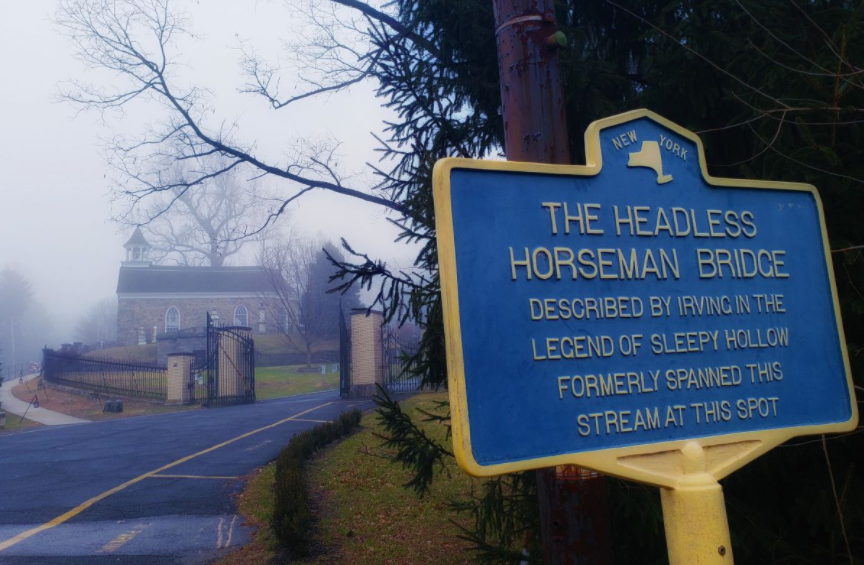
There is also an actual bridge with an historic marker indicating that “The Headless Horseman Bridge described by Irving in the Legend of Sleepy Hollow formerly spanned this stream at this spot”. The actual wooden bridge has long since gone, but was actually a bit further upstream inside our next stop, Sleepy Hollow Cemetery.
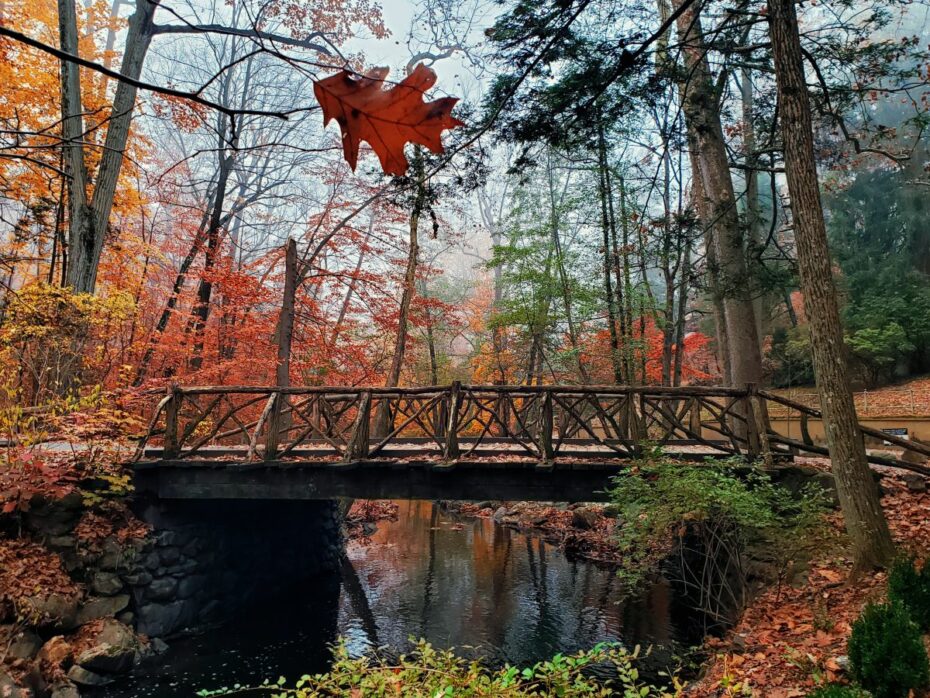
Found right next to the old Dutch Church burying ground but a separate entity entirely, the cemetery is the final resting place of Washington Irving himself. The beautiful and still active cemetery was built during the fashion for landscaped garden cemeteries in the 1800s, and you’ll find notables such as Andrew Carnegie and William Rockefeller buried amidst the elaborate mausoleums.
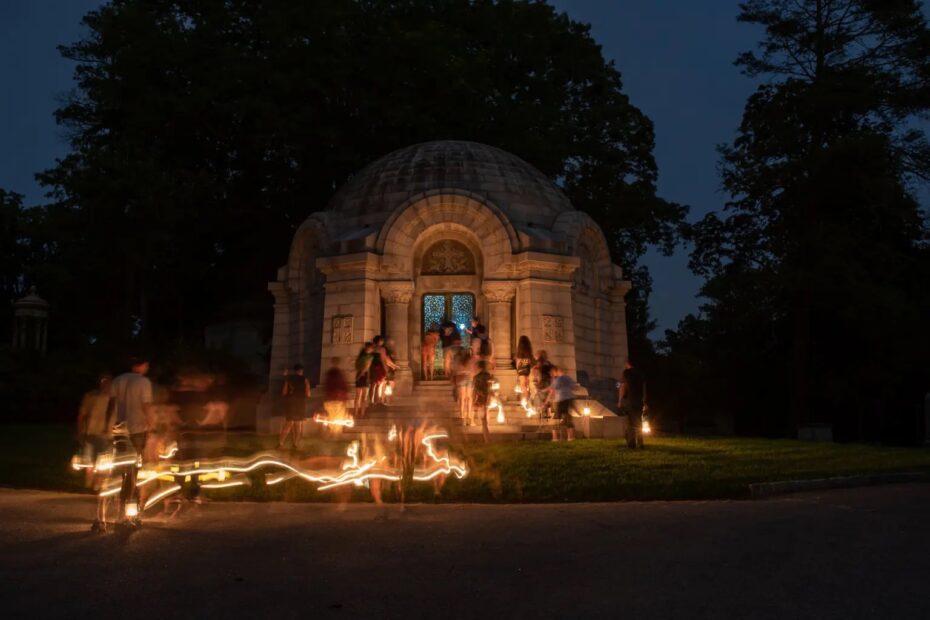
The cemetery also offers excellent tours such as champagne cocktails whilst peeking inside the mausoleums, and night time visits lit by kerosene lantern. You’ll also find a quaint wooden bridge across the stream that it is far easier to imagine Ichabod Crane racing across.
Ghost Tours of a 19th Century Music Hall
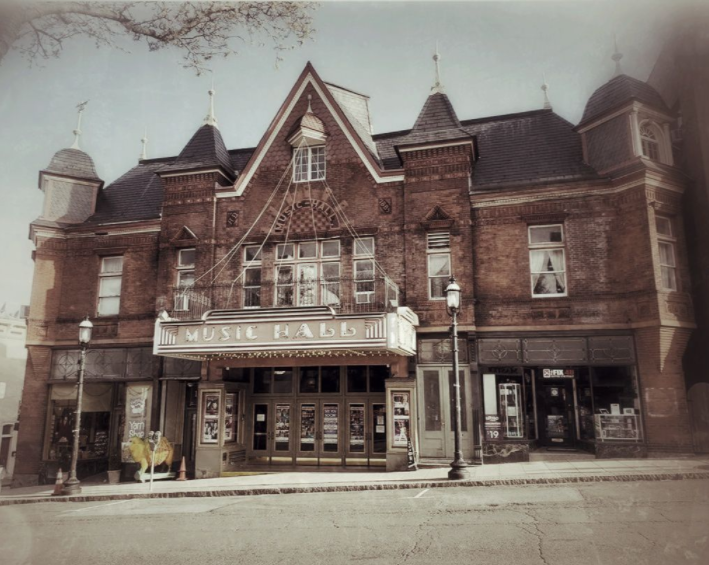
Back in Tarrytown, located near the top of Main Street you will find the Tarrytown Music Hall. A beautiful red brick theatre built in 1885 with Queen Anne flourishes from the same architectural firm that designed Macy’s grand department store in Herald Square and the Grand Central Palace. One of the first theatres in America to show motion pictures, the exquisite building also hosted lavish balls and entertainments for Tarrytown’s millionaire residents, such as the Rockefellers, Vanderbilts and the Goulds, some of the wealthiest families in the United States. Today, the Music Hall is still open as a concert venue, and offers nightly ghost tours during the month of October. There’s nothing quite as enchanting as the faded gilt and plush glamour of an old theatre dating back to the 19th century, and is the perfect setting to explore the secrets of old Tarrytown Music Hall.
The Mysterious Octagon House
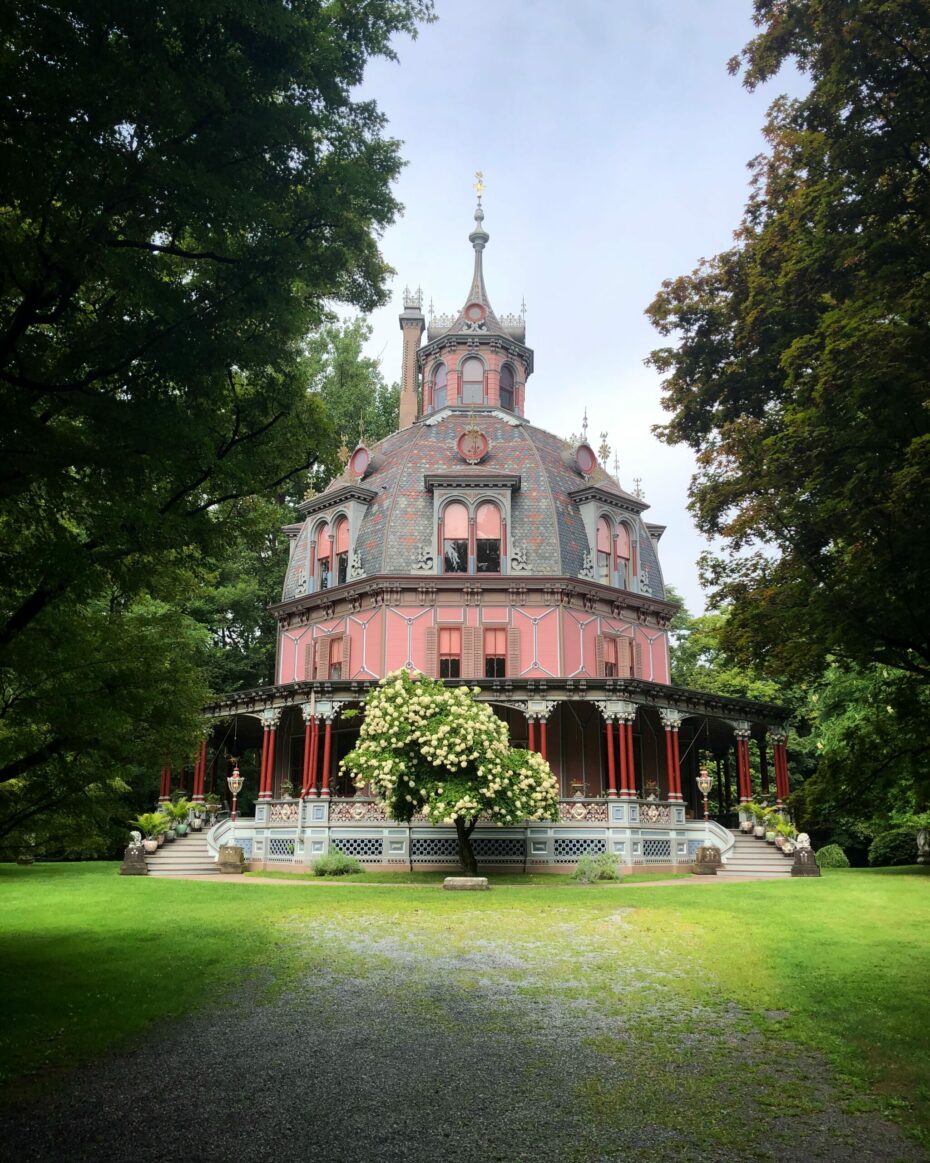
The Armor Stiner house could be our most favourite home in all of America. Built during the 19th century fashion for eight sided houses, this peculiar octagonal shaped home can be found just south of Tarrytown. Octagon Houses were dreamt up by a leading Victorian phrenologist, and the Armor Stiner is perhaps the most beautiful remnant of the movement. From its lush gardens and beautifully painted eight sided porch, to an exquisitely decorated ‘Egyptian’ room topped with a magnificent dome resembling an ancient Roman temple, you can find out much more about the history of octagon houses and the Armor Stiner, in our behind-the-scenes visit and talk with its owners.
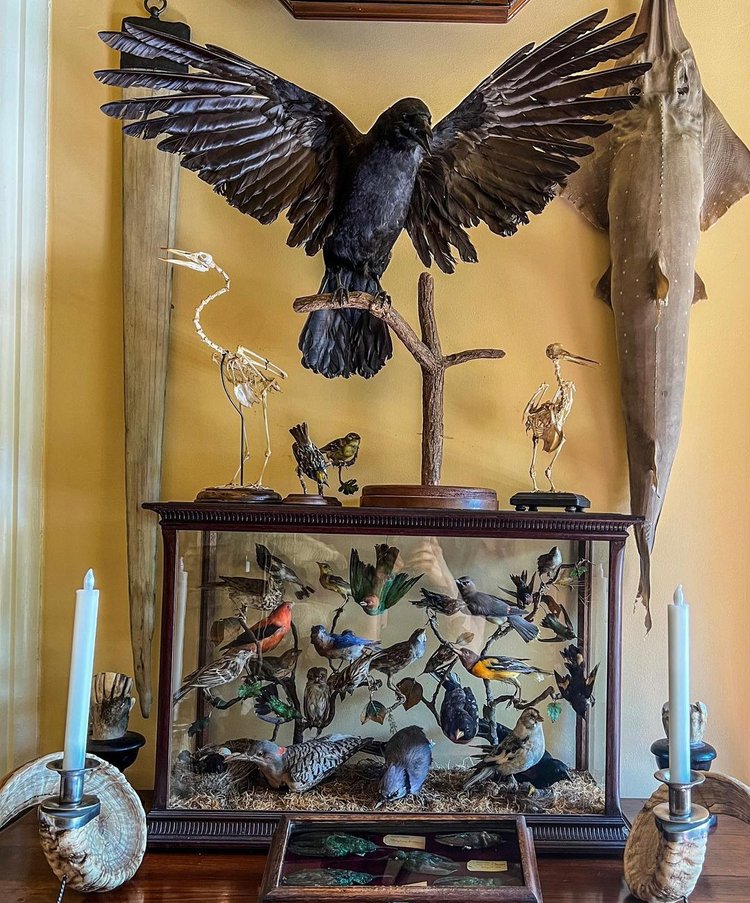
During October there is a special other-worldly delight of an exhibit and installation by Ryan Matthew Cohn, creator of the Oddities Flea Market. Part of the Armor Stiner’s season ‘Myths and Mysteries’ house tours, Cohn’s collection of peculiar antiques and ephemera are shown against the backdrop of one of America’s most unique and enchanting homes.
The Great Jack O’Lantern Blaze
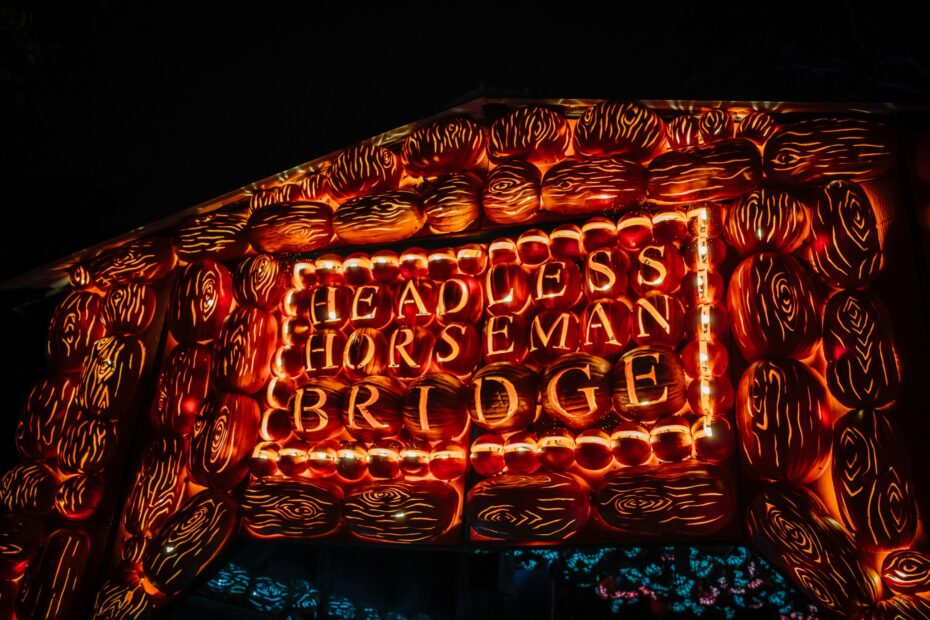
Perhaps the most spectacular reason to visit Sleepy Hollow Country is the wildly magical Jack O’Lantern Blaze, where over 7,000 pumpkins have been breathtakingly carved, illuminated and built into every shape possible. Life sized working carousels spin alongside dinosaurs, the Headless Horseman bridge, and even an art gallery featuring pumpkin themed versions of grand masters. The Blaze can be found within the grounds of an 18th century estate, the Van Cortlandt Manor in nearby Croton, whose ancient timbers and buildings are lit only by the ghoulish glow of thousands upon thousands of pumpkins.
We caught up with professional pumpkin carver Jonas LG Karlsson, a Swedish artist living in Sleepy Hollow, to explore the captivating allure of one of Halloween’s most recognisable elements: the humble pumpkin.

“When I carve pumpkins…it is the same thing as when you stare at old wood finish, you suddenly can imagine a face or details in the pattern that almost come alive at you. That is how I do it with pumpkins. I begin by staring. It is quite effective most of the time….the process from start a finished pumpkin includes sketching, inking and lastly carving, so it can take much longer than most people think.” For Karlsson, the draw of living and working in Sleepy Hollow is palpable.
“My fascination for Sleepy Hollow is the mix of true history and literary legends and myths which you can see traces of here and there. I love Washington Irving’s legacy and the more I learn about his life and work the more I want to explore. It is just a special feeling knowing he walked the cobblestones on the same street as me.”
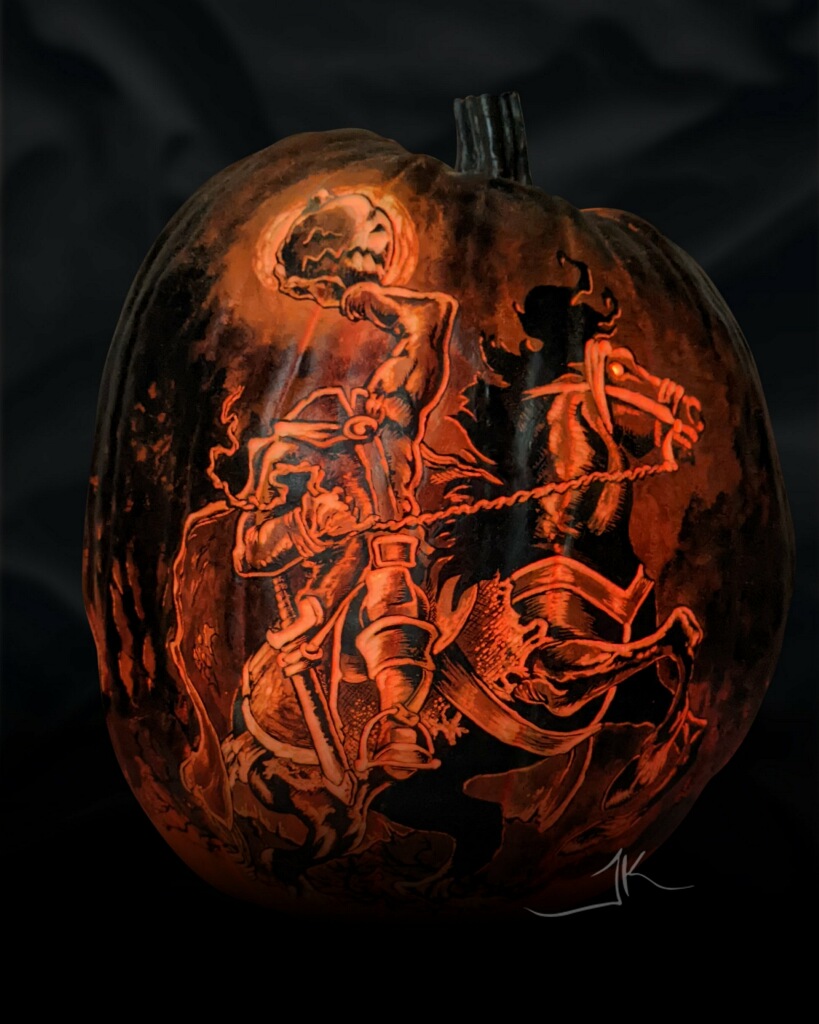
Our favourite part of visiting the Blaze is to sip a pumpkin beer from the local Captain Lawrence Brewing Company and follow the pumpkin lit trail to a disused tavern built in 1750 by the banks of an old river crossing for the Albany Post Road back to Manhattan. As this ancient thoroughfare recedes into the distance as you can faintly hear the sound of approaching hooves on cobblestones of a horseman missing his head.
Listen To The Legend of Sleepy Hollow Under The Stars
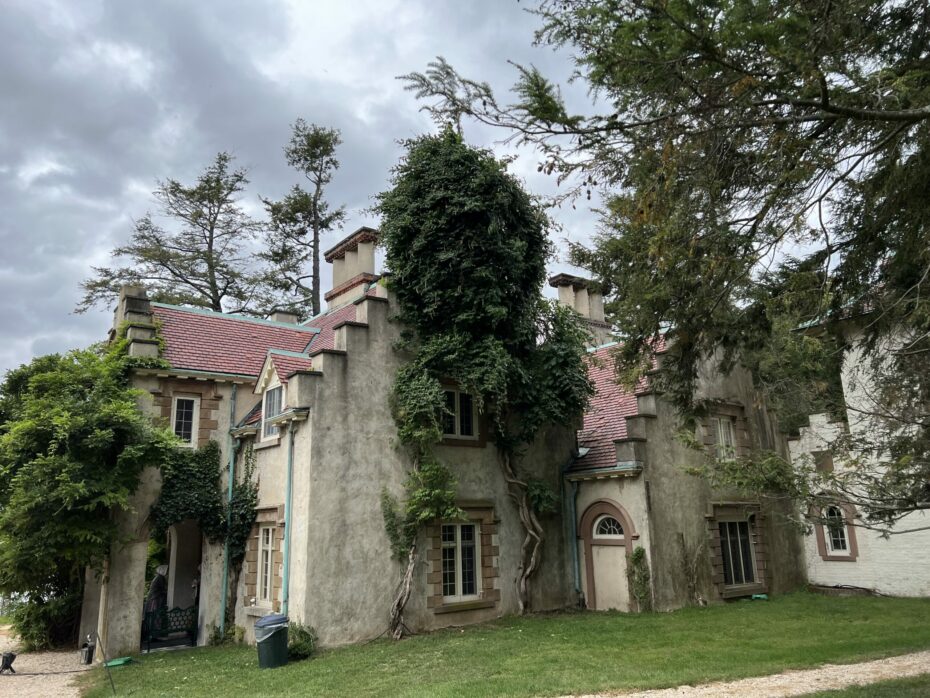
There can be no better place to listen to a live telling of the Legend of Sleepy Hollow than at the home of its author. When Washington came to Tarrytown to live, he did so in suitable style, moving into a 17th century stone cottage called Sunnyside that had once belonged to the Van Tassell family of Sleepy Hollow. Irving redesigned the house, giving it a wonderful appearance, part gothic fairytale andpart Dutch Colonial, covered in haunting looking wisteria. From this quaint cottage overlooking the Hudson River, Irving would host evening with his literary friends, and write in his study in what Harper’s Weekly descibed as ‘the best known and most cherished of all the dwellings in our land.” During October, this magical little cottage in the woods is host to a live retelling of the Legend of Sleepy Hollow performed by local master storyteller Jonathan Kruk. A captivating one man show in the grounds of Sunnyside, complete with an appearance of an actual headless Hessian horseman, the evening brings to mind old fashioned story telling around the fireplace.
Off The Beaten Path
When out exploring we always like to try and uncover the more peculiar, out of the way discoveries that perhaps don’t make it into regular guide books. Here are just a few things to keep your eyes peeled for when walking about Sleepy Hollow Country…
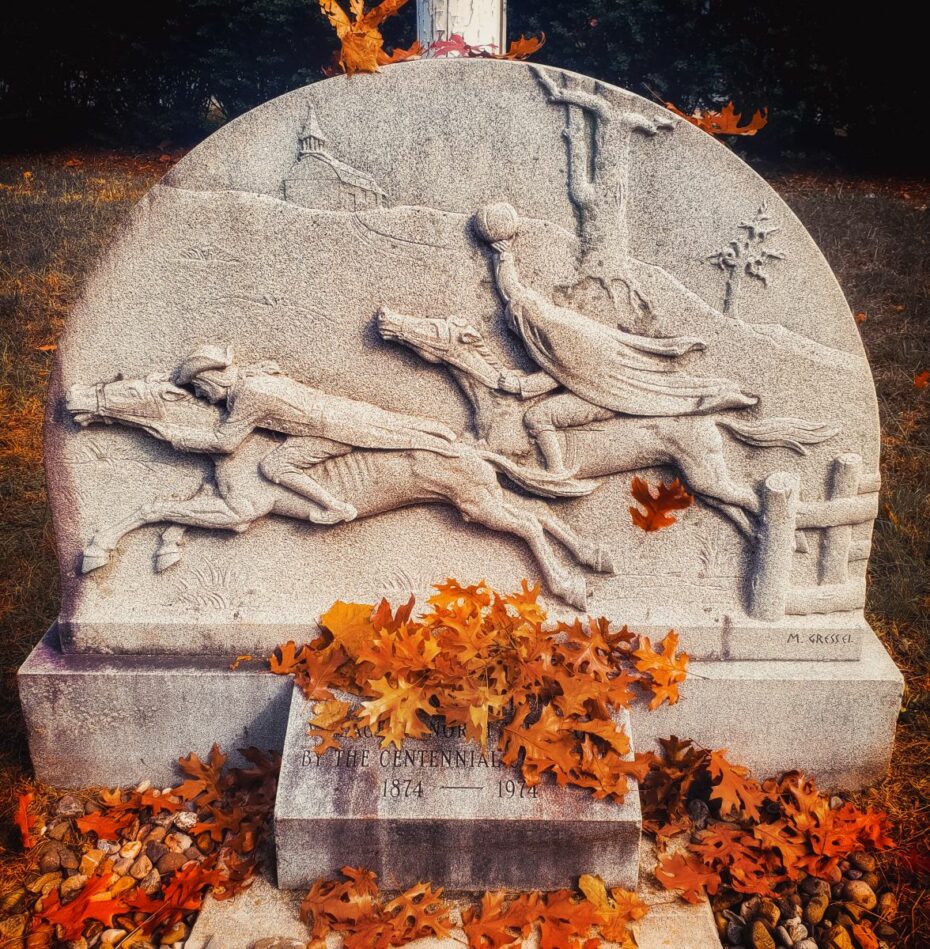
Passing mostly undisturbed behind the main through fare of Broadway is an old path. It cuts through people’s back gardens, parks, woodlands and grand mansions. What’s special about the path is what lies underneath – a 19th century aqueduct! A remarkable feat of engineering, it used gravity to bring water from Westchester County all the way down to midtown Manhattan. Today it is possible to walk the entire 40 plus miles of the Croton Aqueduct that will give you a unique glimpse into another side of Sleepy Hollow Country. You can find out more about this hidden gem when we set out to walk its distance.
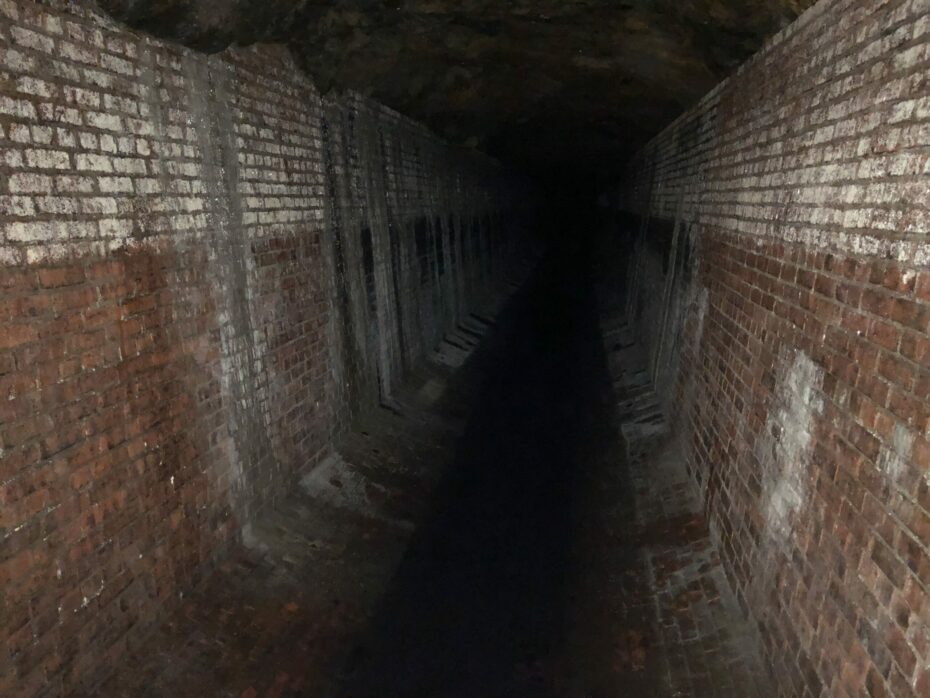
Whilst the Old Dutch Church of Sleepy Hollow attracts the most visitors, another church in Tarrytown bears a slightly more personal bequest from Washington Irving that lives onto this day. Irving served as a vestryman at Christ Episcopal Church on South Broadway from 1848 until his passing. He planted ivy using cuttings he had taken from Abbotsford House in Scotland, the home of his close friend Sir Walter Scott, who had encouraged Irving to write the Sketchbook of Geoffrey, Gent. Wander over to the this still active church today, and you will see Sir Walter Scott’s living ivy today, adorning the church facade facing Broadway, via the hands of Washington Irving. The gothic grandeur of Lyndhurst looks like it would be more at home overlooking a Scottish loch than the banks of the Hudson.
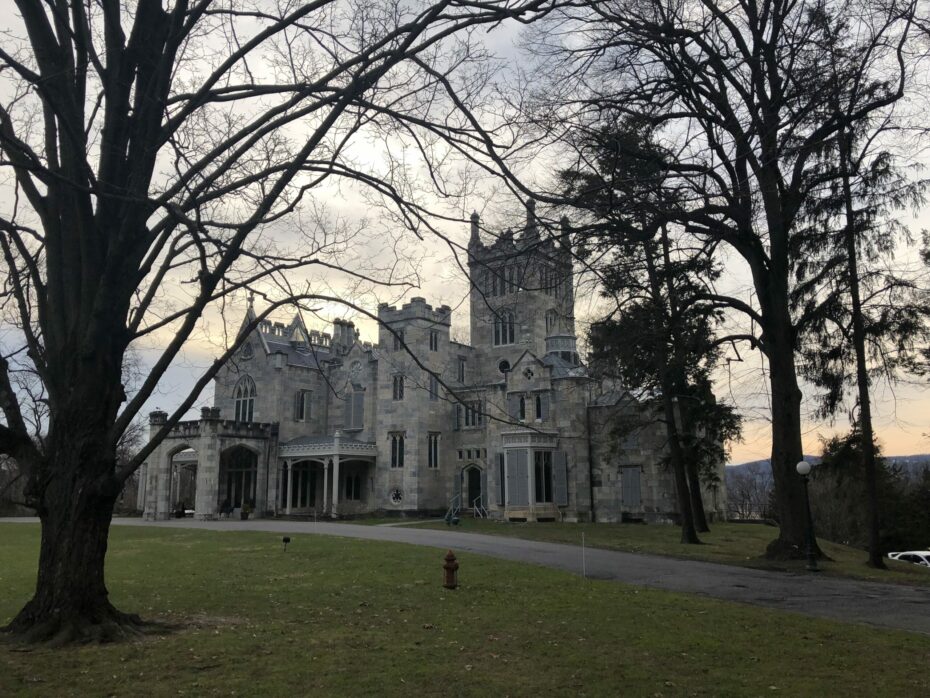
Whilst the magnificent former home of railway robber baron Jay Gould, once one of the wealthiest men in America is well worthy of a taking a tour around, we’re particularly fans of two spots on the sweeping grounds. A short walk from the mansion is a beautifully preserved, old fashioned Wooden Bowling Alley we discovered when setting out to track down the last of these in America. Keep walking still and you’ll come across the abandoned ruins of an immense rose and orchid greenhouse, once the pride and joy of the lady of the mansion, Helen Gould. This estate greenhouse was at one time thought to be the largest and most state of the art greenhouse in America, but today it is a haunting, overgrown and rusted remnant of the Gilded Age.
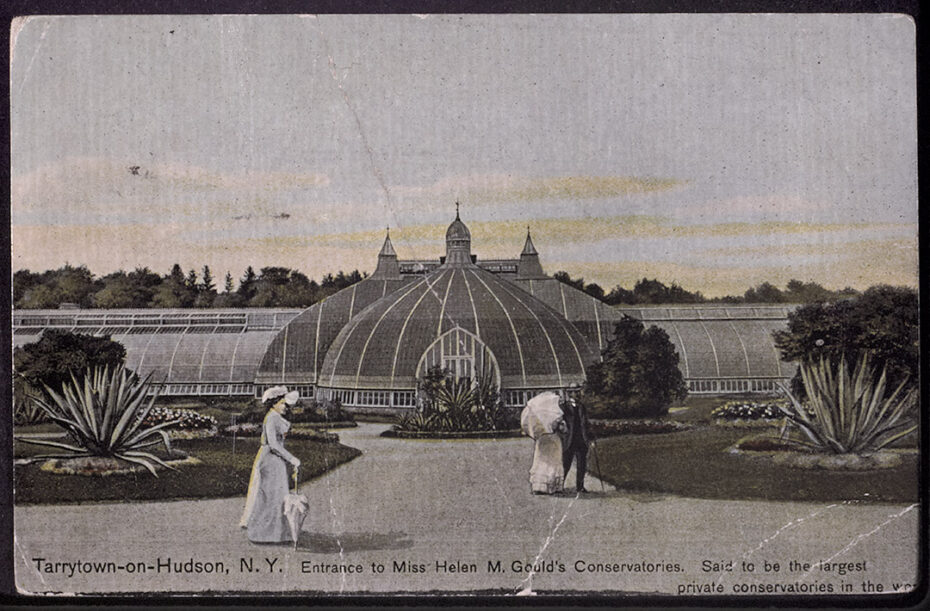
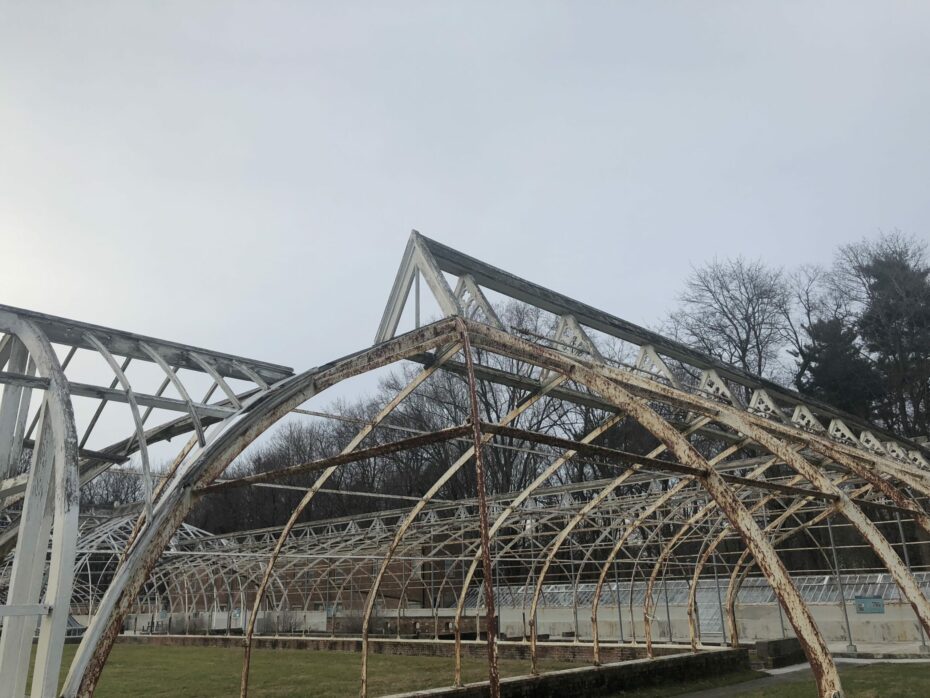
Patriot’s Park and André’s Brook which runs through it marks the dividing line between Tarrytown and Sleepy Hollow. This beautifully landscaped park played host to a key event that swung the tide of the American Revolution. It was here early in the morning of September 23rd, 1780 that John André, a major in the British Army and head of its Secret Service in America was caught by three local men of Tarrytown in the park. He was carrying in his sock the plans on how to take the military stronghold of West Point on the Hudson River that had been handed to him by a disillusioned American general, Benedict Arnold, who commanded the fort.
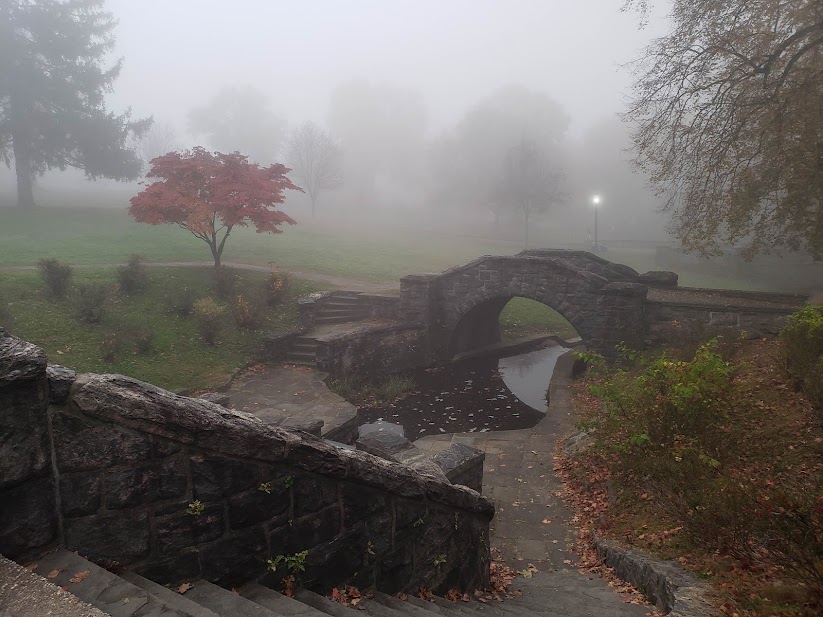
Major André had been trying to escape through American lines to Manhattan in plain clothes, when three Tarrytowner’s, John Paulding, Isaac Van Wart and David Williams caught him. André was hung as a spy by the order of George Washington, and a memorial was put in Patriot’s Park, known as the Captor’s Monument featuring a statue of John Paulding, bearing the inscription, “Here in 1780 three honest militiamen arrested Major John André Adgt-Gen. British Army, disguised, preventing disaster to American cause.” Host to a farmer’s market on Saturday morning, make sure to sit by the brook that still runs through the park: for this was where Ichabod Crane first encountered the Headless Horseman!
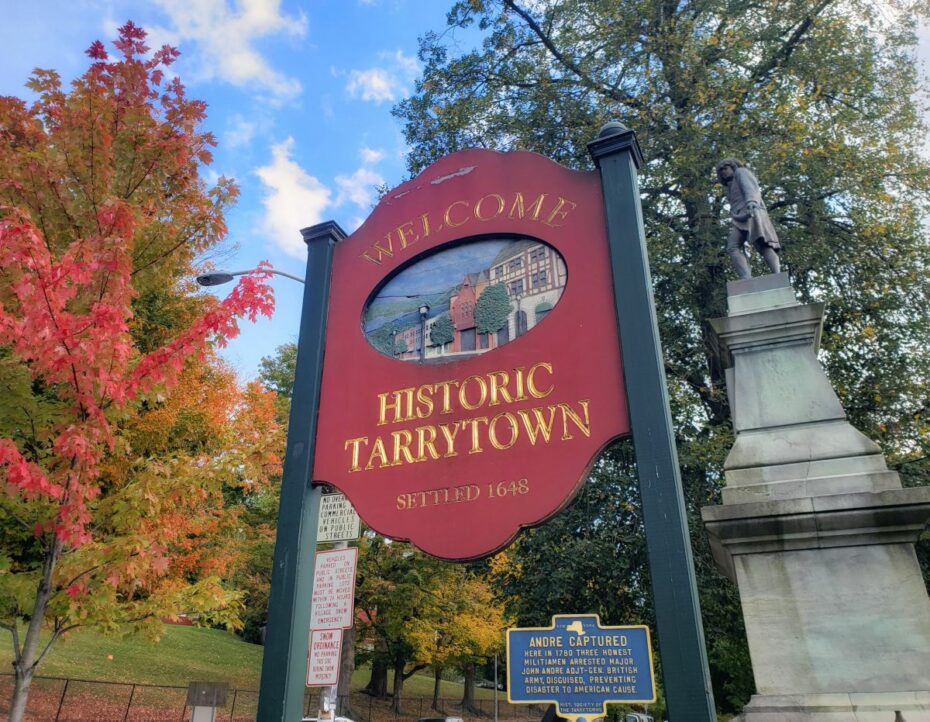
Spooky Sips
If you’re wondering how Tarrytown got its rather unusual name, Washington Irving provides the answer in the Legend of Sleepy Hollow:
“We are told, in former days by the good housewives of the adjacent county, from the inveterate propensity of their husbands to linger about the village tavern on market days.”
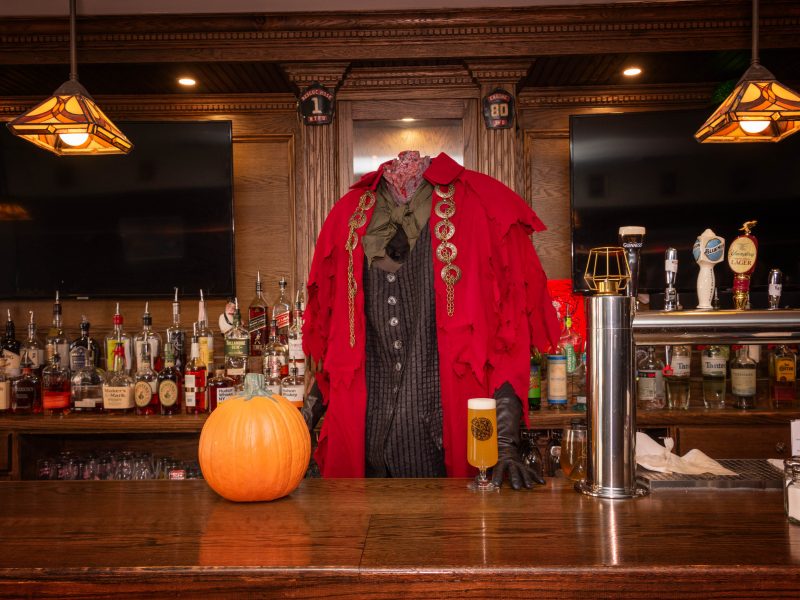
After a long day’s exploring Sleepy Hollow Country there are fortunately many taverns in which one may still tarry and linger a while with a restorative. Here are our favourites…
First port of call is Horsefeathers on North Broadway. This cosy, family run tavern is lined with rich dark wooden panelling, snug booths, shelves filled with books, and old time black and white films on the televisions. It also happens to be wonderfully decorated for the autumn season!
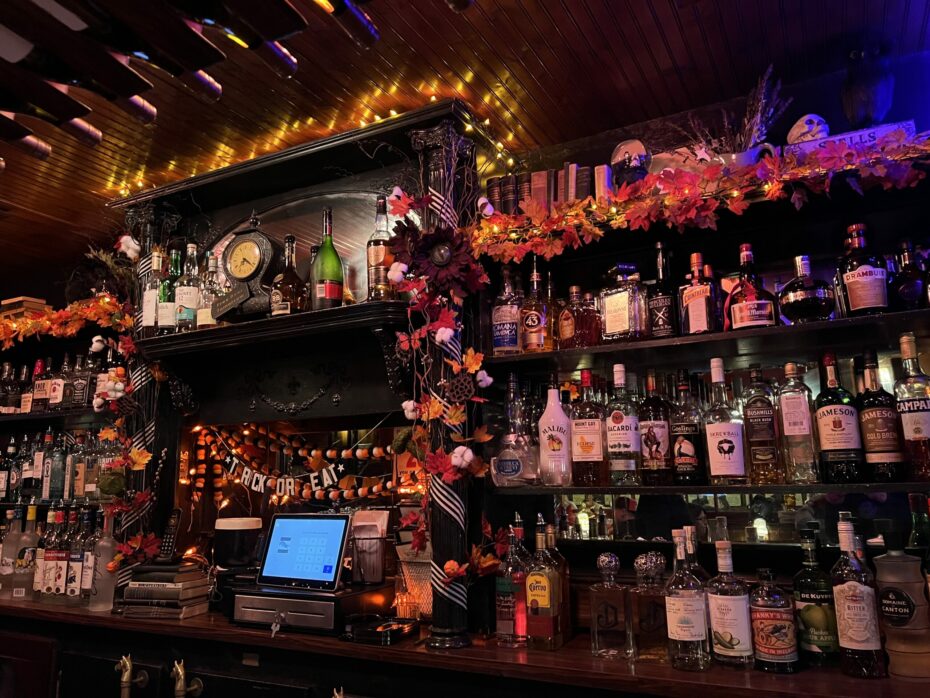
Wander along Broadway and stop by the Tapp, named for the Tappan Zee Bridge that once spanned the Hudson between Tarrytown and Nyack. The bridge’s recent replacement was named after New York State Governor Mario Cuomo, but is still known by locals, many of whom you will find propped up against the friendly bar as the Tapp! Make your way down Main Street and enjoy and true taste of Cuba at the Cube Inn, with superb cocktails that transport you happily to Havana! On the other side of the street is the Set Back Inn, a village staple, sometimes boisterous, open late and an always friendly pitstop set back as the name implies from Tarrytown’s principal street. Over in Sleepy Hollow, we always like to drop in at the Beekman Ale House. It is a good sign you’re in a local neighbourhood spot when the bar is decorated with the helmet shields of all the local volunteer fire departments. The Ale House also happens to have the best pizza in town.
There is much more to explore in Sleepy Hollow Country with the autumn season filled with other spooky and historical events. The best place to find out more is at the excellent Visitsleepyhollow.com website. The calendar in particular will be helpful to guide your path.
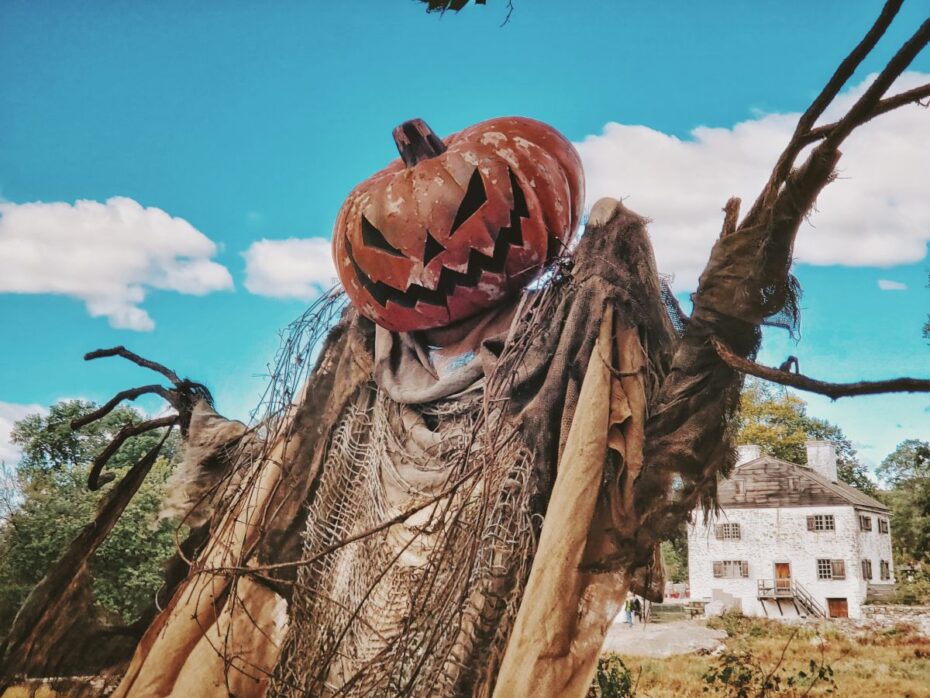
And so we take our leave of Sleepy Hollow Country, where Ichabod Crane disappeared never to be seen again. Visit this October and you will find two charming small villages, Tarrytown and Sleepy Hollow, steeped as much in early American history as they are in spooky folklore. A place where just as Washington Irving wrote over two hundred years ago, “If ever I should wish for a retreat whither I might steal from the world and its distractions, and dream quietly away the remnant of a troubled life, I know of none more promising than this little valley.”


